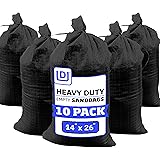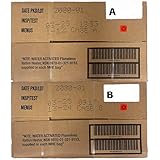1. Family Members
Building a Family Plan
When it comes to emergency preparedness, the first people I think about are my family members. Building a plan together is essential. Having open discussions about potential scenarios—like natural disasters or medical emergencies—helps everyone understand their role. It’s about making sure that we’re all on the same page.
I find it helpful to sit down with everyone, perhaps over dinner, and talk through what emergencies might affect us. The more we share our thoughts, the more we can create a comprehensive plan. Plus, it’s a great time to bond and make everyone feel included.
Don’t forget to practice the plan! Role-playing different scenarios can simplify the real thing later on. Getting everyone involved makes it a fun family activity while being serious about safety.
Including Pets in the Planning
Pets are part of our family too! When planning, it’s crucial to have a strategy for them as well. I always make sure I have an emergency kit that includes supplies for my furry friends—think food, water, leashes, and any medications they might need.
Also, know where your pet will be during an emergency. Having a designated safe spot for your pets can help reduce their anxiety and keep them safe.
Finally, ensure that anyone involved in the plan knows how to handle your animals, especially if they’re not familiar with them. For me, it’s about making sure my pets are as taken care of as the rest of my family.
Checking In on Extended Family
We often check in on our immediate family, but what about extended family? Grandma might not have the same resources, and it’s important to include them in our plans. I always reach out to see if they need assistance and what their preferences are in case of an emergency.
Communication is key. I genuinely try to ensure everyone knows their role and has a support system in place. Sometimes I just send a comforting message saying, “Hey, if anything happens, I’ve got your back!”
== > What if ... Get a FREE Subscription to PREPARE
Don’t underestimate the power of keeping tabs on all family members. It reinforces the idea that we are a community, looking out for each other, no matter the distance.
2. Neighbors and Friends
Establishing Neighborhood Connections
Having a strong connection with my neighbors is a lifesaver during emergencies! I make an effort to know who lives around me and what skills they bring to the table. You might have a firefighter or a nurse nearby, which is invaluable in a crisis.
It’s important to foster relationships before an emergency strikes. I organize block parties where we can share safety tips, arrange contact lists, and discuss what to do in specific situations. It helps everyone feel more secure.
Plus, a close-knit neighborhood can provide immediate assistance when things go south. Just knowing there’s someone nearby who can lend a hand is a comforting thought.
Creating a Neighborhood Emergency Plan
Once you have that connection, it’s time to create a neighborhood emergency plan. This isn’t just about you; it’s about pooling resources. I often suggest forming a group to talk through potential local emergencies, like floods or fires.
Once we’ve all discussed our vulnerabilities, we can create a plan for who will check on whom and when. I like having a buddy system in place, where we regularly check in on each other.
It’s about teamwork, y’all. Everyone feels more empowered when they know they can count on each other during tough times.
Staying in Touch with Friends
Don’t forget your friends! We all have a circle that can be crucial during emergencies. I keep a constant line of communication with them about our plans. I want them to know they’re welcome to join in our family plan if needed.
Also, I like to check if they even have an emergency plan in place. Sometimes I’ll send cute texts saying, “Just checking that you’re stocked up on supplies!” It’s a friendly nudge that might just encourage them to prepare.
Friends can often provide support in ways we hadn’t anticipated. So, don’t shy away from reaching out. You never know how much help you might need or how much they might need from you!
3. Local Community Resources
Connecting with Local Organizations
One thing I’ve learned the hard way is to connect with local organizations. Fire departments, hospitals, and even local Red Cross chapters can provide valuable information. By reaching out, I’ve taken the steps to ensure I know the resources available in my area.
These organizations often have resources dedicated to emergency preparedness. Many even hold workshops where you can learn everything from first-aid to evacuation plans, which I’ve always found incredibly valuable.
Don’t forget to get to know the folks who work for these organizations—they can be a real lifeline during crises.
Learning About Local Emergency Services
The more I know about my local emergency services, the better prepared I feel. I take time to learn what each service offers and in what scenarios to use them. For instance, knowing when to call 911 versus a local non-emergency number is crucial.
I’ve even made a list of local services and their numbers to ensure I have them handy. It sounds simple, but if something happens, we might not think clearly, so having that list can save a lot of time!
Learning about what’s available in your community also contributes to a sense of normalcy amidst chaos. It reassures me that I have support, and it can help keep those around me calm as well.
Utilizing Social Media and Apps
In today’s world, social media can be a powerful tool in emergencies. I’ve joined local community groups online where people share real-time updates during crises. It helps keep everyone in the loop, which is awesome!
Additionally, I’ve downloaded local emergency apps that provide alerts and safety tips. I can quickly access safety information and emergency contacts at my fingertips. It’s just another layer of preparedness.
Staying connected digitally allows for a broader safety net. The more resources we have at our disposal, the better off we all are!
4. Schools and Workplaces
Collaborating with Schools
If you have children, it’s vital to coordinate with their schools on emergency preparedness. I make a habit of knowing the school’s emergency protocols. How will they handle a crisis? What’s the plan for reunification?
By working closely with educators, parents can convey any specific needs, such as health concerns or disabilities that require special attention. Communication is key to ensuring our kids are safe when we can’t be there.
I also encourage parent-teacher meetings as an excellent time to bring up these discussions. Schools appreciate collaborative efforts, and so do the parents—knowledge is power!
Engaging Workplaces in Safety Plans
Let’s not forget about the workplace; I often think of it as my second home. I’ve taken the initiative to ask about my company’s emergency plans. What happens if there’s a fire or natural disaster while we’re at work?
Companies typically have their own protocols but being involved in discussions provides valuable insights. It never hurts to suggest safety drills, help craft emergency communication trees, or just stay informed about the evacuation routes.
Being aware of office plans keeps me calm and in the loop, and it’s a place where I can help share ideas with others. We all have a role to play in emergency preparedness, even at work.
Children’s Awareness
Teaching kids about emergency preparedness at an early age is super helpful! I try to engage my children in discussions about safety plans and explain why they matter. We talk about what to do in different scenarios, making it as interactive as possible.
I’ve used games and fun exercises to make these lessons memorable. For instance, we practice what to do in case of a fire or a power outage. When they see it as a game, they absorb the lessons without even realizing it!
By doing this, I feel I am empowering them. They gain confidence and know they are ready for whatever comes their way!
5. Emergency Service Professionals
Understanding Their Role
It’s important for me to connect with emergency service professionals. They are the ones who will help us in desperate situations. I like to learn about their roles, from firefighters to paramedics, and what they expect from civilians during emergencies.
Understanding their response strategies gives me confidence. It creates a sense of cooperation between the public and these professionals, which is critical during emergencies. I regularly attend local meetings or open days they host, which can be really informative!
Furthermore, reaching out for insight on any community safety initiatives they may have helps build stronger relationships and awareness.
Participating in Training Programs
I’ve found a lot of value in emergency training programs hosted by local services. Whether it’s first aid, CPR, or crisis management, these classes empower me with skills that could save lives—including my own!
Being proactive and seeking out such training allows me to ask questions and understand what to expect during an emergency. It’s like prepping for a test—you want to know the material before you face it!
And let’s be honest, it can be pretty fun to learn these vital skills alongside neighbors and friends—it builds our community spirit while equipping us for the unexpected!
Building Trust with Professionals
Trust is huge when it comes to emergency service professionals. I always aim to establish a good relationship with them. I make a habit of greeting local officers and firefighters and expressing my gratitude for their service. Small gestures go a long way.
Moreover, I’ve learned that they appreciate community support and input. I try to provide feedback or share safety concerns, which can open lines of communication. It creates a sense of mutual respect that’s critical in emergencies.
Building that trust ensures that when emergencies occur, we can stay calm and rely on our trained services effectively. Having a good rapport means I know I can count on them, and they can count on me to do my part.
FAQs
1. Why is it important to include family in emergency preparedness planning?
Including family in the planning ensures that everyone is aware of the protocols and knows their role. It strengthens communication and helps everyone feel secure in how to respond in an emergency.
2. How can I effectively include pets in my emergency plan?
Make sure you have an emergency kit for your pets with food, water, and any necessary medications. Discuss with your family about safe spots they should be in case of an emergency and ensure everyone knows how to handle them.
3. What steps should I take to connect with my neighbors for emergency planning?
Start by establishing connections—introduce yourself, suggest block gatherings, and share contact information. Collaborate on creating a neighborhood emergency plan, ensuring everyone understands their roles.
4. How can workplaces contribute to emergency preparedness?
Workplaces should have clear emergency protocols and engage employees in discussions about safety. It helps foster awareness and allows everyone to be involved in drills and preparedness training.
5. Why should I participate in training programs offered by local emergency services?
Participating in these programs equips you with vital skills and confidence in managing emergencies. It also builds a stronger community by fostering relationships with emergency service professionals.






